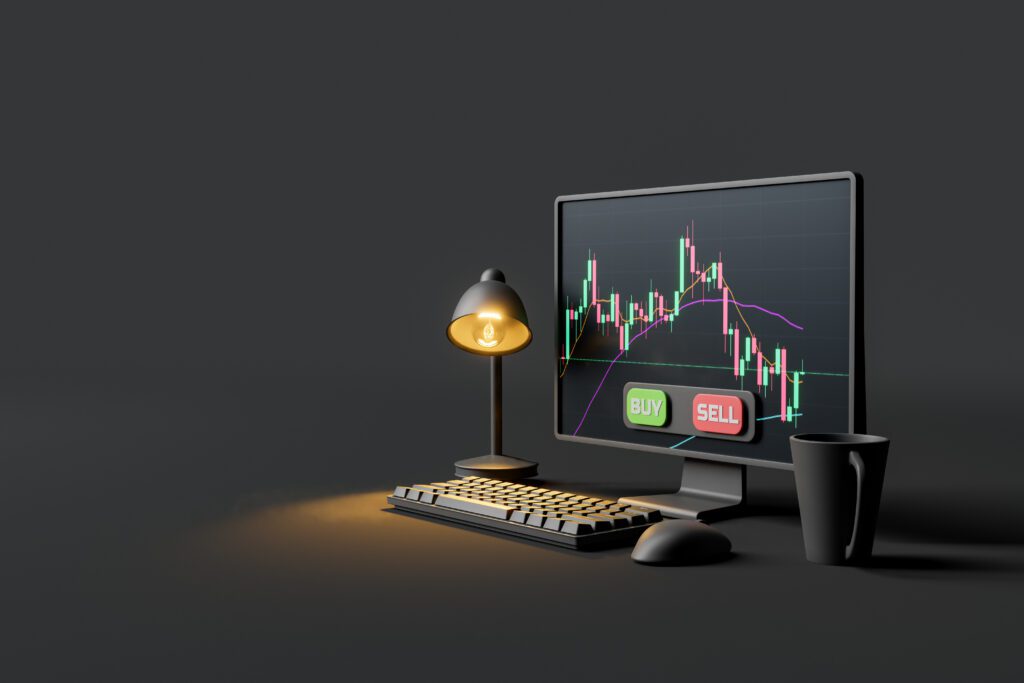Have you noticed the growing popularity of the ‘retiring early’ idea? More people are buying into it because there’s something magical in spending a significant number of years enjoying everything you’ve worked so hard for — not laboring until the end. But it doesn’t happen just because you wish it. You need to have a retirement portfolio.
It’s not too early to start building a retirement portfolio. An early start would put you in the best position to enjoy high returns from your portfolio and even speed up your retirement.
Take a scroll with me as we exhaustively discuss how you can build a wholesome retirement portfolio, specifically —a crypto retirement portfolio, and enjoy the rewards when you decide to hang your boots.
Setting Your Retirement Goals
Retirement should and can be great —but only if you set a goal and worked towards it years before. Your goal has to be measurable and specific. You may have some savings, but how much is targeted at retirement? That’s something to put some thought into.
There are certain considerations to setting up what you want your retirement portfolio to look like. They are:
1. Your current income, and how much can you set aside
This is a great place to start. How much do you have coming in? We don’t want to build castles in the sky, so let’s be realistic about our earnings and present expenses. You can start where you are and work your way up if you’re unsatisfied with your current income.
2. Your projected expenses
It is difficult to set a retirement goal when you don’t know what your living expenses will be. Some expenses include taxes, utilities, black taxes, insurance, etc. So, even if you can’t determine an exact figure, the wisest thing to do would be to know what would most likely make it into your monthly expenses and have an estimate.
3. The standard of living you would be maintaining.
The living necessities would definitely make the list; however, that is the barest minimum. What other extras would make life more comfortable and enjoyable for you in retirement? Would you like to take vacations occasionally, live in a foreign country, or even hide away in a cozy, quiet town? Whatever standard you’d like to maintain — let it inform your retirement goals.
4. Estimated life expectancy
This one may be a little difficult to imagine and even plan —however, it is a vital part of life. Nobody can accurately predict this. But, some signals include your country’s life expectancy, current health status, lifestyle, etc. The number of years you’ll be living in retirement, all things being equal, should be considered while setting your retirement goal.
After setting your retirement goal, the next step is to get started with creating your crypto retirement portfolio.
3 Things To Consider While Creating Your Crypto Retirement Portfolio
1. How much risks can you take?
Different things inform how much risk you should take. First is your age. As a young person, say, in your twenties, you may be able to take higher risks more comfortably than someone in their forties. Higher risks may mean higher profits but tread carefully.
Another influencing factor is the trajectory of your life. Our life journeys are different, as are the paths we take to get there. So, don’t let the noise from the outside distract you and make you take risks that don’t have any business where you’re headed.
If you decide to take some investment risks, ensure it is not careless. Do your due diligence and check its impact on your retirement goal before proceeding.
2. Balanced portfolio
The phrase, “Don’t put all your eggs in one basket”, applies here. Don’t rely on a singular investment type. Your portfolio should be designed so that you can quickly liquidate some of your assets in case the market is not favourable. With this in mind, divide your portfolio into two goals;
– Diversify asset classes to reduce volatility to provide long-term growth.
– Fixed income assets that are recoverable at any time in the future without a decrease in value, but rather some increase. An example is Bitcoin.
3. Inflation Rate
Storing money in your bank account for a long time is a bad idea. This is because as your money remains idle and the inflation rate continues to climb, the value of your money keeps decreasing.
The devaluation of currencies would definitely have an effect on your money, and your purchasing power will drastically decrease. So, what’s the point of setting all these goals if your cash won’t have the same value several years later? Instead, invest your money where it won’t only retain value but increase exponentially over the years.
Now that you know what to look for, it’s time to talk about crypto as an asset class that has made its way into mainstream retirement investment.
Should You Add Crypto To Your Retirement Portfolio?

Compared to other long-term investments, crypto is relatively new. The nature of cryptocurrency also presents a new challenge to financial analysts.
Due to rapid price fluctuations and high volatility, there’s no definitive answer on whether crypto belongs in a retirement portfolio.
What makes it even more complicated is that the generation more conversant with crypto has not reached retirement age. So it’s difficult to determine how well crypto will perform over the years.
However, on the other side of the fence, crypto is an asset class whose volatility and price fluctuations may be the best thing that will happen to an investor. In traditional investments, seeing an asset make a 10% jump within a day is almost impossible, but it happens very often in crypto. While crypto is a high-risk investment, it can also be a high-growth asset.
Due to these two-faced sides of crypto, financial analysts now advise allocating 5% to 10% of your portfolio to crypto. This way, you’re still in the crypto space without significant risks if the market is down.
Now, here’s the million-dollar question: How do you make the most of this percentage to give you the best possible result? I’ll talk about that next.
Best Crypto Allocation Strategy For Your Crypto Retirement Portfolio
To maximise your crypto allocation in your portfolio, you should have a mix of coins to hedge against inflation and volatility and give it a high-growth potential. Here’s the best allocation strategy you should use:
- 60% Stablecoins: Stablecoins are coins pegged to a government-backed currency, e.g. the U.S Dollar. A stablecoin’s value is equal to the fiat’s value. It is considered the safest type of cryptocurrency that is flexible enough to conveniently buy other cryptos. Note that because stablecoins are less volatile than other coins, their growth projections are not as high. Examples of stablecoins are USDT, USDC, and BUSD.
- 30% Fundamental Coins: The fundamental coins are Bitcoin and Ethereum. They are the best-performing coins and have shown resilience and potential for all other cryptocurrencies. They can also be used to store the value of funds —especially Bitcoin. This means that they are easily recoverable without depreciation. These coins also have high liquidity, making cash conversion relatively easy and quick.
- 10% Promising Projects: Because you’re looking at long-term profitability, projects with high potential should also make your portfolio. These projects don’t necessarily have high market values yet, but they are well on their way to being high-flying cryptos. Look out for those cryptos, research them extensively, and check the coin’s social sentiments before investing.
How to Identify Promising Crypto Projects
Follow these steps to find the right crypto project to invest in;
1. Know where to find crypto projects.
To find new quality projects, you can check out Initial Exchange Offerings (IEO) platforms like Binance Launchpad or OKX Jumpstart. Here, you can find vetted start-up projects that you can invest in.
2. Understand the project’s vision.
Many projects spring up every other day, but it’s up to you to filter them based on their vision. The project you’re investing in must have a solid and achievable vision.
3. Quality of the Whitepaper
A whitepaper should explain the project in depth without technical jargon. In the whitepaper, you should find the problems the project is solving, its features, and how it intends to solve the problem. A project that doesn’t clearly state these and is filled with technical jargon may waste time and money.
4. Tokenomics
This is the coin’s economics and reflects its value according to its use in the market. For example, if a coin is solely for utility, it may be more prone to fluctuation than if used to drive a decentralised application (DApp).
How to track your Asset’s Performance
After investing, your work’s not done. You’re now tasked with managing those assets. Asset tracking will help you stay true to your retirement goals and help you quickly know the following line of action to take.

There are tools that make asset tracking less daunting. Some are;
- CoinTracking
- CoinStats
- The Crypto App, etc.
Frequently Asked Questions (FAQs) About Building A Crypto Retirement Portfolio
Should Crypto Be Part Of A Retirement Portfolio?
Crypto is a high-risk investment due to its volatility but it is also potentially a high-profit investment. However, because we’re dealing with a retirement portfolio, it’s best to be safe. So, If you’re including crypto in your portfolio, allocate about 5 – 10% of your investment to it. This way, you’ll be well cushioned in case of potential losses, but you also profit from its growth if the market goes well.
What Is The Safest Long-Term Crypto?
Technically, there are no safe cryptocurrencies. However, the ones with the lowest volatility are stablecoins. Stablecoins are tied to a fiat (e.g. Dollar), so they’re at the same value as their fiat counterparts. Some stablecoins are USDT, USDC, and BUSD.
How Do I Invest In Crypto For Retirement?
To invest in crypto, the best strategy is to allocate about 5% to 10% of your portfolio to crypto. Within this allocation, you want to maximise profit and minimise risk by investing 60% in stablecoins, 30% in fundamental coins, and 10% in promising projects.
To buy these coins, look for a reliable exchange platform and move your investment into a cold wallet for safety.
How Much Of A Retirement Portfolio Should Be In Crypto?
5% to 10% should be apportioned to crypto in your retirement portfolio to cushion you against loss while keeping you in profit if the market goes favourably.
Is Holding Crypto Long-Term A Good Idea?
Crypto has seen tremendous growth and adoption in recent years —especially Bitcoin. Despite this, crypto is still a highly volatile asset. At the same time, crypto is a potentially high-growth market that can give you high returns. So, ultimately, you must do your research and choose crypto with excellent prospects for long-term growth and profitability.
Wrapping It Up,
By following these laid-down steps and guides, retirement would look great on you! Don’t forget to research any chosen cryptocurrencies and keep your investment safe using cold wallets to store your assets.
And when you’re ready to enjoy your rewards sometime in the future, you can expect a seamless crypto-to-cash trading experience with Breet.
I wish you a healthy portfolio as you embark on this journey!
